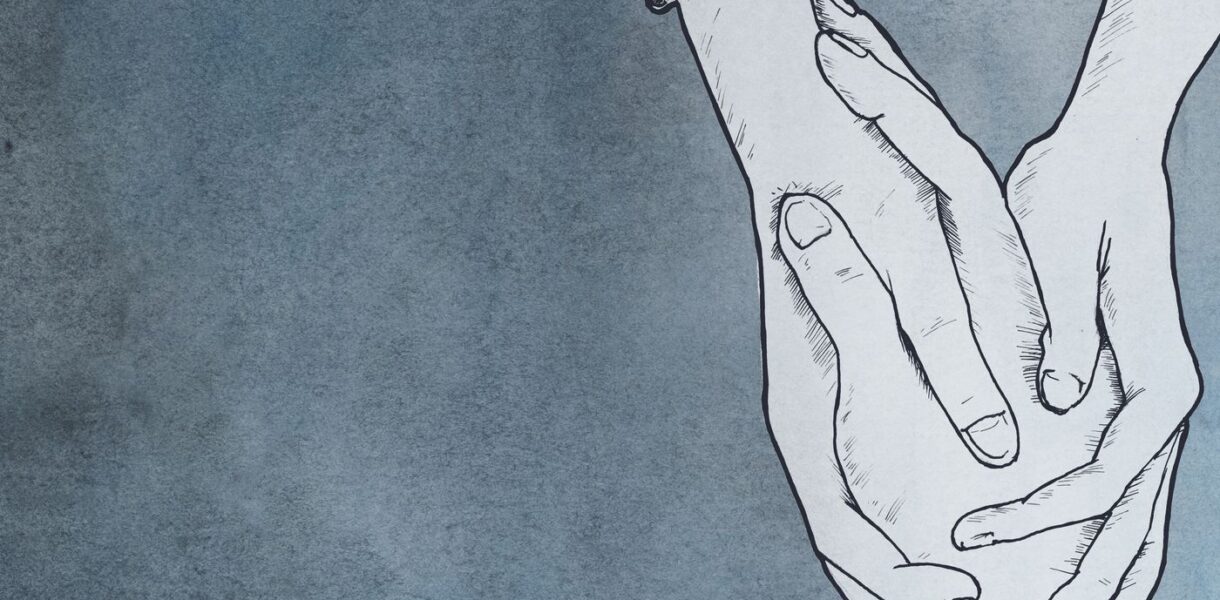
Suicide has become a sad but common tendency these days. Reason could be any, failure, disputes, fights etc., people commit suicide when they believe they have no other way left to address or resolve the problem. There are times when people in a family dispute are fed up of such dispute and due to all the stress, pain, and dejection, they see suicide as the last and final resort.[1] Often fights between husband and wife also leads to major and minor disagreements and one of the spouses then chooses the way of ending one’s life, which isn’t the correct solution for sure. Society’s approach towards dealing with victims of suicide is usually harsh and insensitive, which also harms the surviving kin of the deceased. Hence, to bring sensitivity towards suicide and people with suicidal tendencies, the Mental Healthcare Act, 2017 has been introduced.[2] Under the Indian law, those who instigate suicide are held criminally liable. This article aims to analyze the legal issues surrounding suicide and its encouragement.
Suicide itself is not a crime under IPC, but an unsuccessful suicide is punishable as attempt to suicide under S.309 of IPC. Suicide itself is not declared as crime under IPC because once a person commits suicide and it’s successful, the person is no longer alive for prosecution and further punishment. Secondly, on the emotional and psychological aspect, choosing death is nothing less than punishment. However, attempt to suicide i.e. unsuccessful suicide is punishable under S.309 of IPC.[3] The constitutional validity of S.309 has been in controversies for a long time. First, S.309 was declared unconstitutional in P. Rathinam v. Union of India[4]. However, in Gian Kaur v State of Punjab[5], P Rathinam was reversed and S.309 was held constitutionally valid.[6] However, The Mental Healthcare Act, 2017 has effectively decriminalized suicide, creating a presumption that a person who has committed suicide is under severe stress unless otherwise proved and makes it government’s responsibility to provide care, treatment, and rehabilitation to a person having severe stress and who is susceptible to suicide or such attempts.[7] However, abetment to suicide is a distinct offence, and often the person who instigated the other person to commit suicide is held liable under this offence, defined under S.306 of IPC.
Section 306 of the Indian Penal Code defines abetment of suicide and punishment for such abetment. It says that “If any person commits suicide, whoever abets the commission of such suicide, shall be punished with imprisonment of either description for a term which may extend to ten years, and shall also be liable to fine.”[8]
There are certain essential elements to be established for constituting the offence of Abetment of Suicide. These elements can be derived from both the language and interpretation of the section. They can be enumerated as:
- There must be some active suggestion/instigation, provocation, incitement or encouragement.[9]
- The activity can be instigation, cooperation or intentional assistance.[10]
- Before convicting an accused for abetment of suicide, it must be established that the suicide has been committed by the victim of such instigation.[11]
- There should be a live or proximate link between the act of abetment and actual commission of suicide.[12]
Instigation is to goad, urge forward, provoke, incite or encourage to do “an act”. To satisfy the requirement of instigation though it is not necessary that actual words must be used to that effect or what constitutes instigation must necessarily and specifically be suggestive of the consequence. Yet a reasonable certainty to incite the consequence must be capable of being spelt out.[13] Thus, such incitement can be in the form of – use of force, words, conduct, willful omission or deeds or for that matter even silence of accused in order to annoy or irritate or harass the deceased which resultantly caused the latter to take steps to put an end to one’s life, conclusively establishing the mens rea required for Abetment to Suicide.[14] To commit abetment to suicide, the most essential ingredient is that the deceased must commit suicide and accused instigated such suicide by direct involvement through words, act or omissions willfully and knowingly. There has to be a live or proximate link between the act of accused and the act of commission of suicide.[15] A history of continuous harassment through taunts, maltreatment, and repeated dowry demands led to mental torture to the deceased lady. Further, her husband fought with her at her sister’s place one day before suicide. In this case, Court held that this all constituted abetment of suicide.[16] A person having an extra-marital affair and beating his wife and abusing her to the extent of causing her mental agony, so much that she wrote letters to her parents about it, and committed suicide after that amounted to cruelty under section 498A and husband was held guilty of abetment to suicide.[17] A superior who was insulting, humiliating and harassing the deceased, and making continuous illegal demands leading the employee to the path of suicide was held as abetment of suicide.[18] But mere criticism of an employee’s work would not amount to abetment to suicide. A mere publication of a defamatory article would not be sufficient for abetment of suicide.[19] If the accused had taken the money from the deceased to sell a plot and later after taking money refused to do so, would not amount to abetment of suicide.[20] A mere failure to fulfill the promise would not amount to abetment to suicide.[21]
The case of Sanju v. State of M. P.[22] clarifies the position on abetment of suicide that abetment has to be active, instigative, provocative and proximately linked to the act of suicide. Further, if either of the elements remains unfulfilled, then in such case, abetment of suicide cannot be established. The Court has clearly laid down that words uttered in a quarrel or on the spur of moment, such as “to go and die” cannot be taken to be uttered with mens rea. It is in a fit of anger or emotion. Later, Court reiterated the principle of this case in another case i.e. Hans Raj v. State of Haryana[23]. Therefore, a person cannot be simply implicated for words spoken in a fit of anger or emotions which later leads to some sort of irrational step by another person. Abetment of suicide has been penalized in order to deter the death baiters in the society who provoke people to end their own lives, but through such judgments, Court has time and again ensured that a person may not be unnecessarily thrown mud on and dragged into the penal circle. In simple words, the standards of abetment are one of the prominent ways to prevent its misuse for false prosecution and revenge purposes.
Today, suicide has become a global concern. There are people across the world committing suicide, mostly because of mental health issues. Therefore, it is high time that legal authorities must take into account the burning need of giving its due to the mental health and addressing it in a reformative, rather than in a preventive or deterrent way. One such initiative is Mental Healthcare Act, 2017, where a person who attempted suicide is considered as a person who needs care and attention and is not an offender. More of such initiatives are required, with cooperation from all the factions, groups, and stakeholders of the society. Time has come when curbing the factors and persons who trigger the suicide is needed, and not curbing the person who attempted suicide, hence making life worse for him or her.
The current year, 2022, marks the five years since the introduction of Mental Healthcare Act, 2017. Being a tad bit progressive than its predecessor, the 1987 Act, it includes definition of mental illness, and a victim’s right to legal aid. Despite the 2017 Act being in place, mental health has still been a stigma. From the politicization of demise of Sushant Singh Rajput to Post-pandemic depression and PTSD Claims by people, mental health is still not given its due, and has barely become the part of day-to-day conversations. One of the possible reasons to stigma being intact could be the lack of awareness among the commonfolk. Many people may still not be aware that suicide is no more a crime; and that mental health patients and those suffers from trauma need love, compassion, and patience, and not ignorance.
About The Author
Anshi Joshi is a final year B.A.LL.B (Hons.) student at MNLU Nagpur. Her areas of interest are ADR, International law, Constitutional Law, and TMT laws.
Photo Source:Vox
References
-
Suicide, World Health Organisation, Jul. 17, 2021, https://www.who.int/news-room/fact-sheets/detail/suicide. ↑
-
Singh Sakshi, The Mental Healthcare Act, 2017 – An Analysis, Niti Manthan, March 21, 2021, https://nitimanthan.in/blog-posts/blog-niti-manthan/2021/03/21/mental-healthcare-act-2017-analysis/. ↑
-
Jaimithra S., Decriminalised Crime in India: Suicide, Ipleaders Blog, Oct. 22, 2019, https://blog.ipleaders.in/decriminalized-crime-india-suicide/. ↑
-
AIR 1994 SC 1884. ↑
-
AIR 1996 SC 946. ↑
-
Ibid. ↑
-
S. 115, The Mental Healthcare Act, 2017. ↑
-
S. 306, Indian Penal Code, 1860. ↑
-
K I Vibhute (rev.), P S A Pillai, CRIMINAL LAW, 13th ed. 2017, pp. 691. ↑
-
Ibid. ↑
-
Wazir Chand v State of Haryana, AIR 1989 SC 378; Satvir Singh v. State of Punjab, AIR 2001 SC 2826. ↑
-
M. Mohan v. State, Represented by Deputy Superintendent of Police, (2011) 3 SCC 626. ↑
-
Ramesh Kumar v State of Chhattisgarh, 2001 (9) SCC 618. ↑
-
Praveen Pradhan v State of Uttaranchal, (2012) 9 SCC 734. ↑
-
M. Mohan v State, AIR 2011 SC 1238. ↑
-
Pawan Kumar v State of Haryana, AIR 1998 SC 958. ↑
-
Anoop Kumar v State of M.P., 1999 CrLJ 2938 (MP). ↑
-
Supra Note 11. ↑
-
State of Gujarat v Pradyman, 1999 CrLJ 736 (Guj). ↑
-
Mahesh v State of M.P., 2003 CrLJ NOC 50 (MP). ↑
-
Ibid. ↑
-
(2002) 5 SCC 371. ↑
-
(2004) 12 SCC 257. ↑




